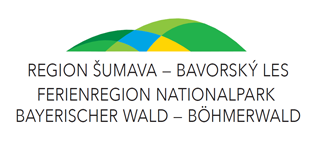12 – The Borderguards’ Path
In the Middle Ages, the Kašperk castle was an important part of the defence of the southwest frontier and in the Sušice area. Charles IV., its founder, devoted his name to this castle. In the year 1356 he ordered his architect Vít called “Hedvábný” /“Silky”/ to build the castle Kašperk for the purpose of “the defence of Bohemia”.
The garrison of the castle was to guard the borderline and the gold-bearing district around Kašperské Hory and to support the security of traffic on the new traderoad called “Gold path”. One of its branches led from Sušice through Kvilda to the Bavarian town Passau.
The Kašperk castle – mainly its centermakes an impression of monumentality, but it’s defence was very passive from the military point of view /relying on the hilly terrain of bad access/. Charles IV. supposed Kašperk to be only one of many other fortified centers meant for the assembling of the troops in case of any attack on their country. They should attack the enemy from here.
This kind of defence represents so-called “active way of defence”, when the army doesn’t defend itself in the fort /and let the invaders rob and plunder in the surroundings/, but it tries to push the invaders out of the country or destroy them as soon as possible. On the contrary, the passive way of defence is typical for not very mobile armies that depend by the defence on the troops safely enclosed in the forts. The Czechoslovak military doctrine in the 1930s preferred the passive way of defence although the army was beeing supplied with the modern tanks and aircraft – the guns for the active way of defence.
The Kašperk castle – mainly its centermakes an impression of monumentality, but it’s defence was very passive from the military point of view /relying on the hilly terrain of bad access/. Charles IV. supposed Kašperk to be only one of many other fortified centers meant for the assembling of the troops in case of any attack on their country. They should attack the enemy from here.
This kind of defence represents so-called “active way of defence”, when the army doesn’t defend itself in the fort /and let the invaders rob and plunder in the surroundings/, but it tries to push the invaders out of the country or destroy them as soon as possible. On the contrary, the passive way of defence is typical for not very mobile armies that depend by the defence on the troops safely enclosed in the forts. The Czechoslovak military doctrine in the 1930s preferred the passive way of defence although the army was beeing supplied with the modern tanks and aircraft – the guns for the active way of defence.

